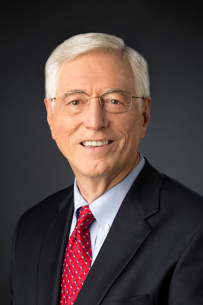Economist: After all the good OKC voters have seen over the past 30 years, why stop now?
- Oops!Something went wrong.Please try again later.
I wonder what Oklahoma City Mayor Ron Norick was thinking when he went out on a limb 30 years ago to propose the first MAPS initiative.
He and other city leaders were probably frustrated at the time and willing to try just about anything to pull the city out of economic doldrums still lingering from the Oil Bust. And they might have still felt the sting of United Airlines’ decision to build its $1 billion maintenance center in Indianapolis rather than OKC.
Oklahoma City was getting used to disappointment in those days, but the tide began to turn in December 1993 when voters approved the first list of Metropolitan Area Projects. Financed through a one-cent sales tax, the projects included a ballpark, an arena, a canal through Bricktown, dams and locks along the Oklahoma River, a downtown library and the list goes on.
Today, MAPS has its own Wikipedia page, and the historic initiative has become a popular example of placemaking: projects that improve a community’s quality of life and attractiveness. And even today, as Oklahoma City considers a new arena development, the success of MAPS is top of mind.
More: Editorial: Why we support building a new arena in Oklahoma City
As we all know, the first MAPS was only the beginning. Voters went on to pass MAPS for Kids, MAPS 3 and MAPS 4. When MAPS 4 ends, Oklahoma City’s MAPS investments will have totaled $2.9 billion, attracting several billion dollars more in private investment, studies have found.
To investigate further the economic impact of these 30 years of placemaking activity, I looked at population growth and personal income gains in OKC and compared them against 86 other U.S. metropolitan statistical areas (MSAs) with 1993 populations of a half million or more. I found that Oklahoma City’s personal income growth, inflation-adjusted, has jumped 124% since 1993, outpacing 70% of the metro areas in my study.
Furthermore, Oklahoma City’s personal income growth is greater than nearby MSAs, such as Tulsa; Kansas City, Missouri; Wichita, Kansas; St. Louis; and Little Rock, Arkansas. Indeed, OKC’s growth is more comparable to Miami-Fort Lauderdale, Tampa-St. Petersburg, and it is slightly ahead of old rival Indianapolis.
OKC's proven MAPS track record
The point of all this is that Oklahoma City has learned a lot over the past three decades. By investing in developments that bring people together, beautify, create community spirit and improve quality of life, Oklahoma City has planted seeds that grow wealth.
Let’s face it. It’s not easy for a city to grow in fly-over country, but that’s what Oklahoma City has done and is doing, and OKC has its community’s leadership to thank for that. Voters have followed Mayor Norick and other leaders on an epic journey of renewal, and now they have an opportunity to continue the adventure behind Mayor David Holt and the OKC Thunder.
MAPS successes of the past should foster trust in leaders’ vision for the future. Considering all the good that voters have seen over the past 30 years, there’s only one question to answer. Why stop now?

Robert Dauffenbach is professor emeritus of entrepreneurship at the University of Oklahoma’s Tom Love Department of Entrepreneurship and Economic Development. He also is the former sr. associate dean for economic development and director of the Center for Economic and Management Research at OU’s Michael F. Price College of Business.
This article originally appeared on Oklahoman: Voters can continue path of MAPS successes by approving NBA arena
